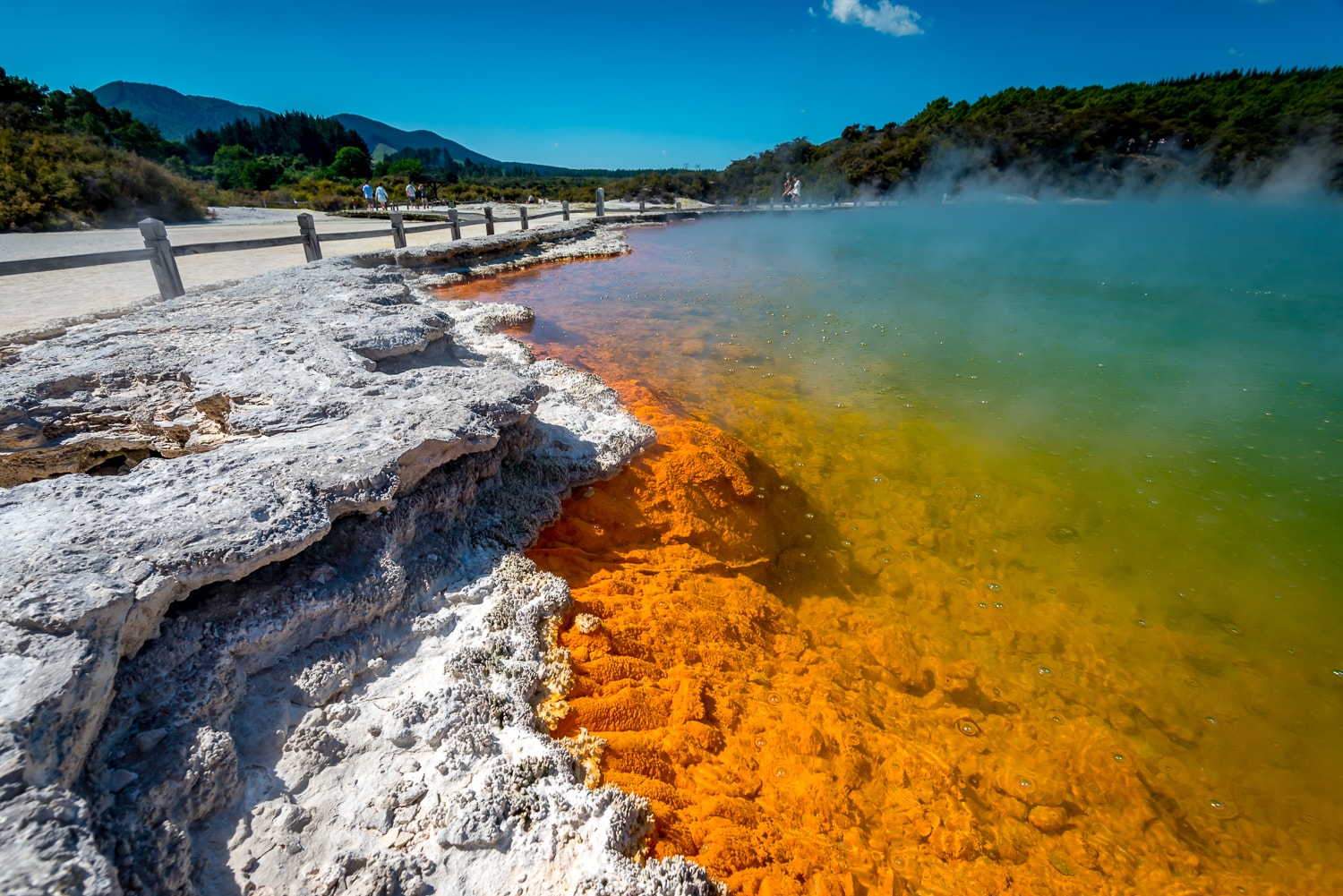Waimangu or Wai-o-Tapu
One of the most common questions we get asked is how Waimangu is different to Wai-o-Tapu. It’s a popular question on TripAdvisor and often covered by travel bloggers.
We’re lucky to be surrounded by so much geothermal activity, these aren’t the only geothermal attractions in Rotorua. But they are close together and sound similar, so how do you choose which one to visit?
What’s in a name?
‘Wai’ means water and ‘Tapu’ means sacred – so Wai-o-Tapu means Sacred Waters. The geothermal mineral waters are considered sacred to the Maori people, who have been using geothermal water for centuries.
Mangu means black in Te Reo Maori, so Waimangu means ‘Black Water’. The name comes from the world-famous geyser that used to play in the geothermal valley at Waimangu in the 1900’s. The geyser would throw up mud and ash appearing black.
History
It is thought that some of the features at Wai-o-Tapu were formed by volcanic events up to 900 years ago. The area has been protected as a scenic reserve since 1931. Wai-o-Tapu was home to a prison camp, where prisoner labour was used to establish the first pine plantations of the Kaingaroa Forest, now the largest in New Zealand. It was these prisoners that discovered that they could manipulate the Lady Knox Geyser with soap.
Waimangu Volcanic Valley didn’t exist until the eruption of Mount Tarawera in 1886. A historical and culturally significant event, the eruption killed over 100 people, buried villages and devasted the surrounding area. The eruption created a rift through the earth 17km long, blasted lake Rotomahana to 20 times its original size, and uncovered the Waimangu geothermal valley.
Colourful Pools
The Champagne Pool is the star of the show at Wai-o-Tapu. The blue green pool has a bright orange edge formed from mineral deposits in the water. The artists pallete has a number of other colours as the water from the champagne pool mises with fresh water, the colours vary with the conditions so never looks the same.
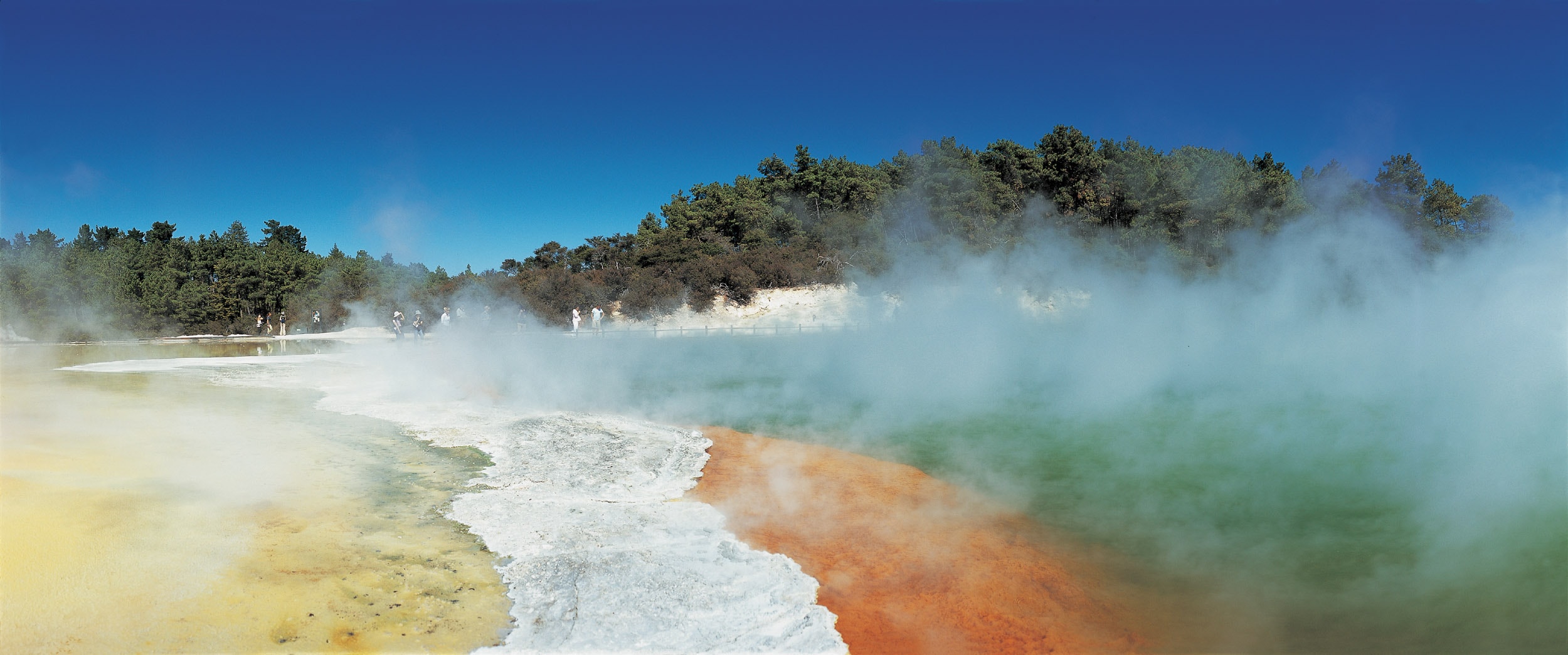
There is also Roto Karikitea, the stunning lime green pool. The water comes from the champagne pool and mixes with Hydrogen sulphite gas. The colour comes from the light refracting off the elemental form as the gas cools. This pool likes more like something out of a comic book than a natural pool.
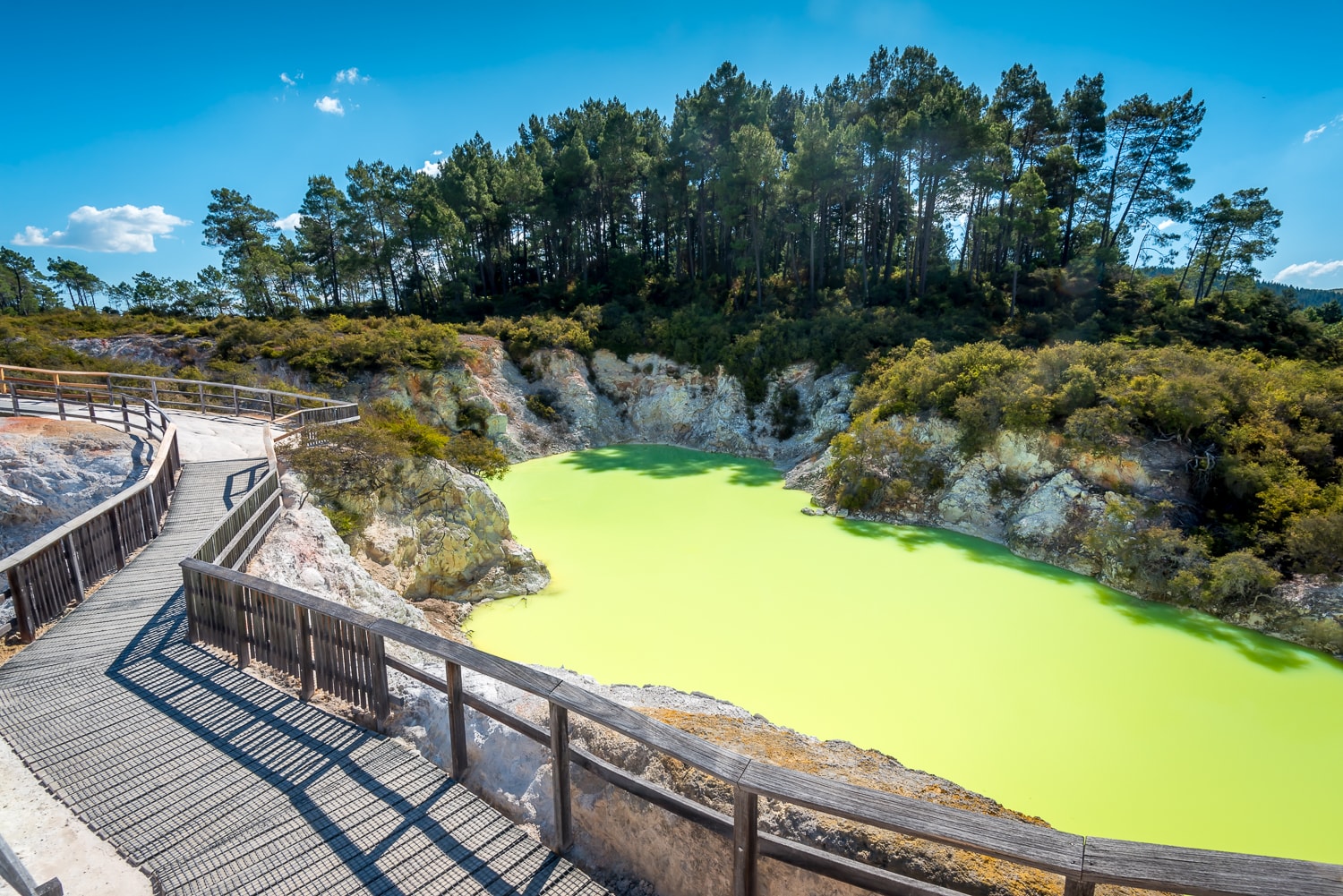
The hidden gem at Waimangu is the bright blue Inferno Crater. This crater lake formed in one of the craters from the 1886 eruption of Mt Tarawera. This lake features a crypto-geyser, an underwater geyser that pushes the level of the lake to rise and fall in a cycle over about 36 days before it overflows down the valley.
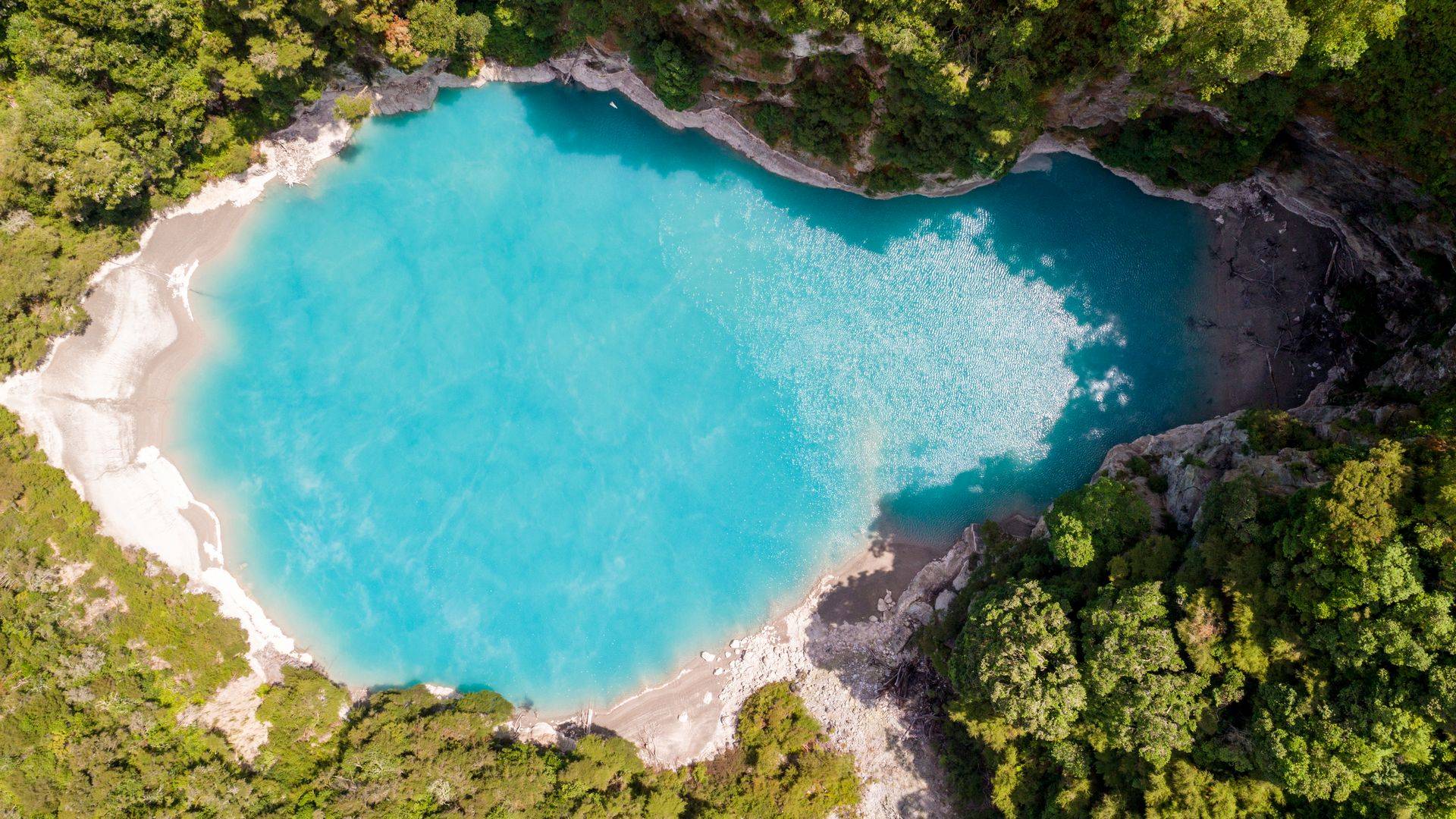
The Emerald Pool is a cold water pool at the top of the Waimangu Volcanic Valley. Ever changing due to the conditions of the water, this lake appears a deep green colour. There is a native red coloured floating fern called Azolla in the pool, which creates a spectacular contrast to the green, sometimes covering a large area of the pool’s surface.
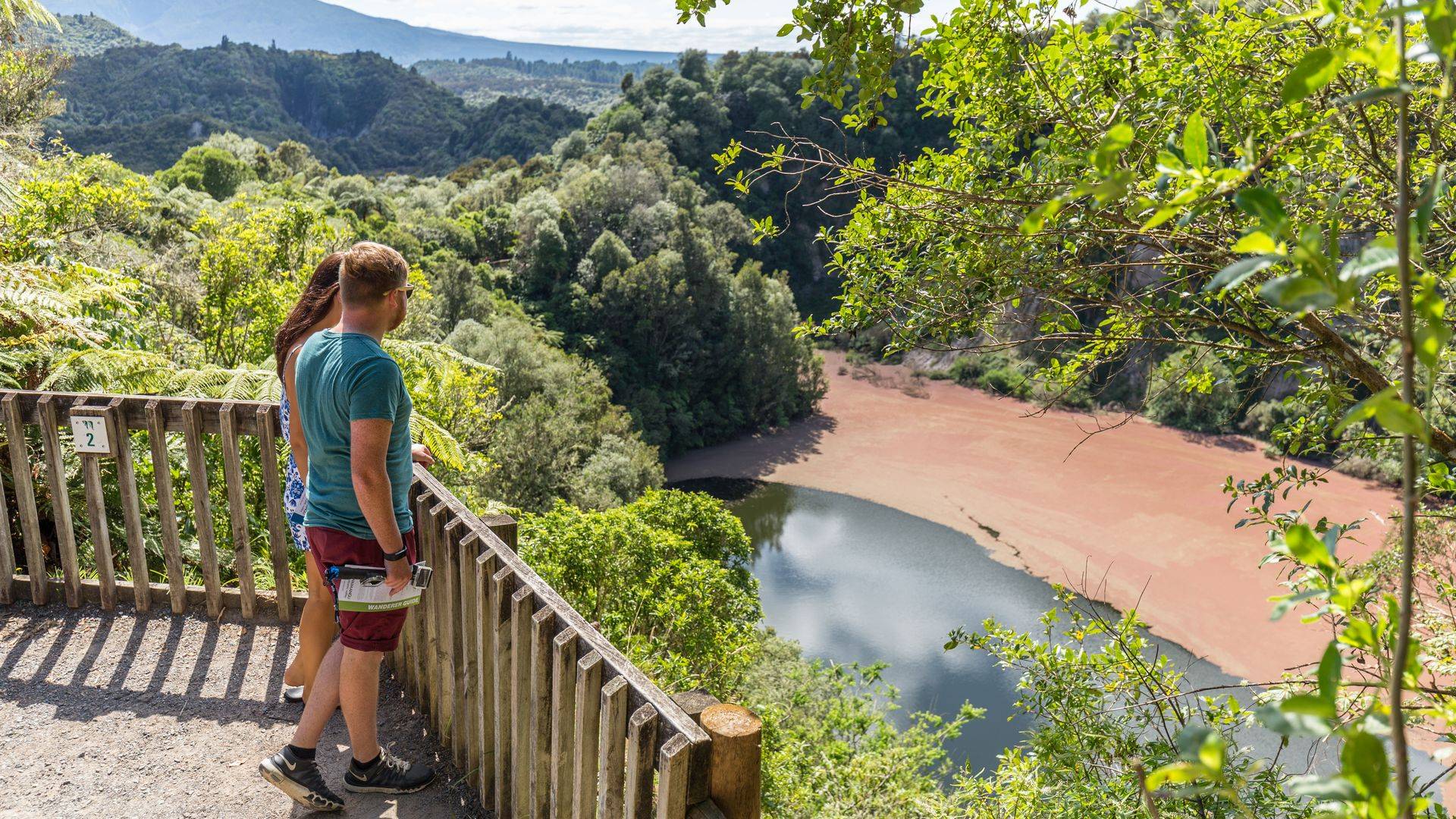
Hot Springs
Waimangu Volcanic Valley is home to Frying Pan Lake, the largest hot spring in the world. Previously known as Frying Pan Flat, visitors used to walk across the sizzling ground before a volcanic event in 1917 excavated the Echo Crater and created the hot spring as it is today.
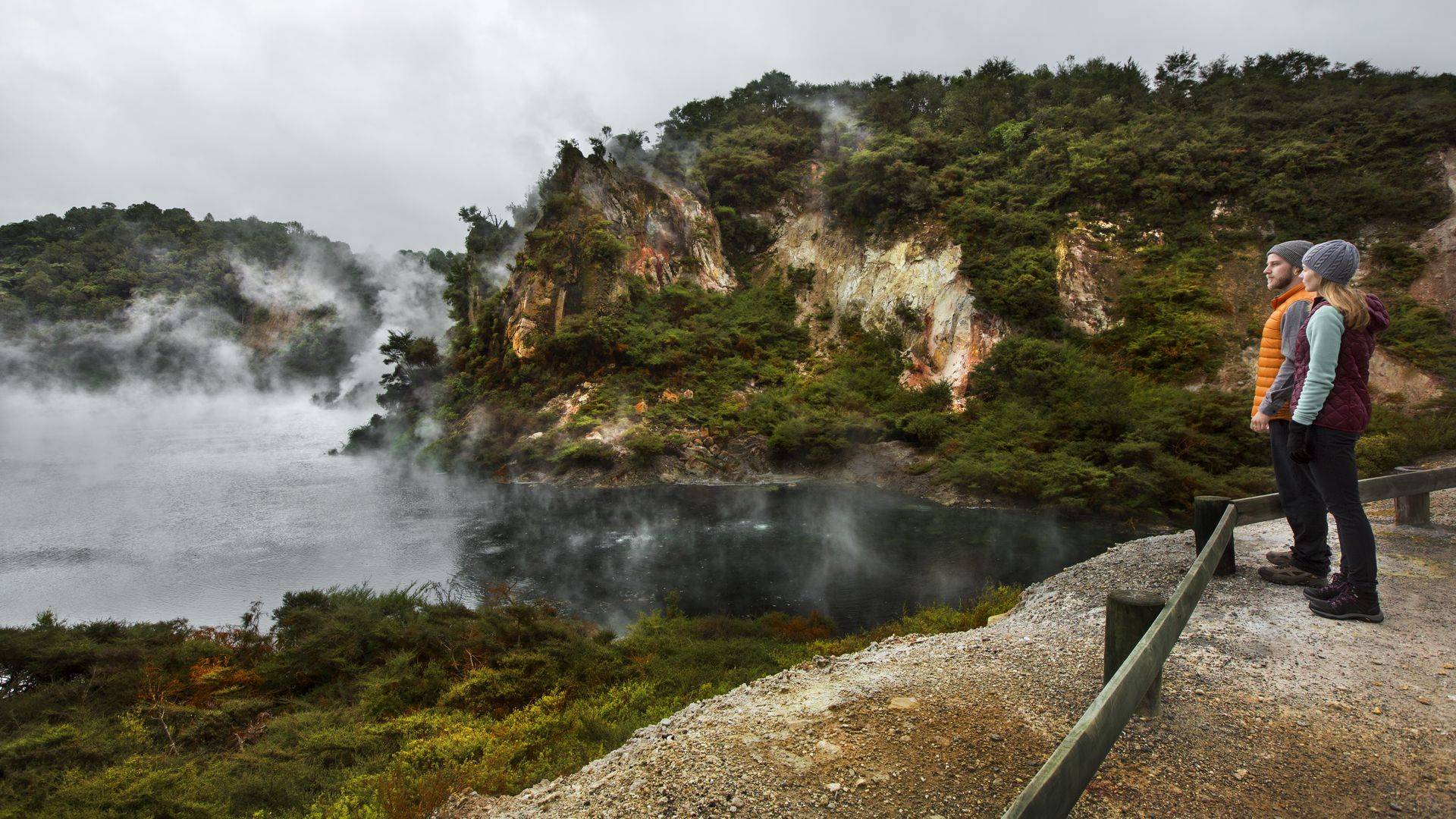
As well as being the most spectacular, the Champagne Pool is also the largest hot spring at Wai-o-Tapu with a diameter of 65m. The name comes from the bubbling or fizzing water, caused by the carbon dioxide gases in the pool.
Geysers
The Lady Knox Geyser at Wai-o-Tapu is a very popular attraction. Early prison workers discovered that the geyser erupts when they put soap in the geothermal water and the Lady Knox geyser has been ‘soaped’ for the enjoyment of tourists for years. With a little human intervention, the geyser erupts daily at 10.15am, providing a guaranteed show for the people who fill the seated area to see it.
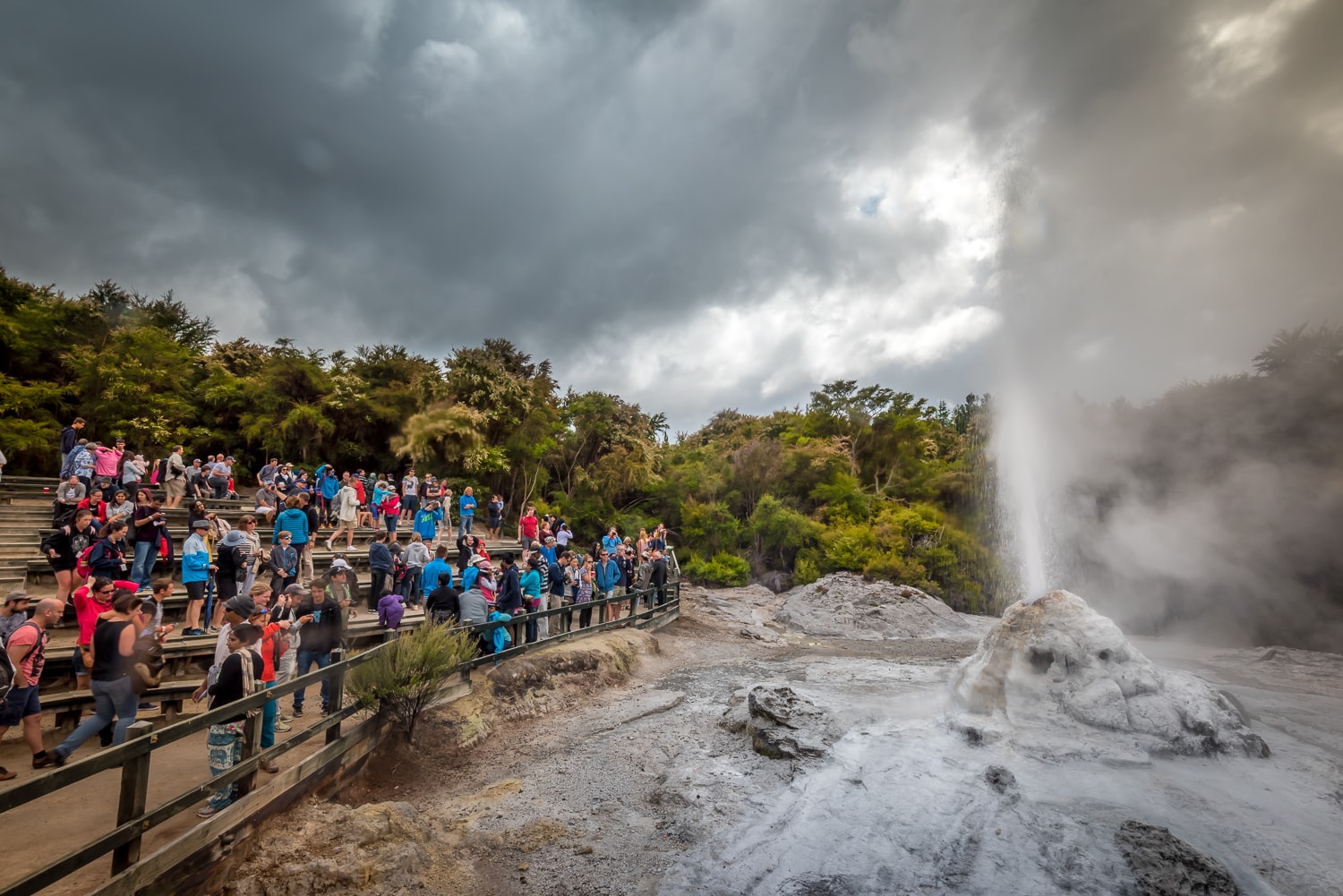
You can no longer see the Waimangu Geyser that the Waimangu Volcanic Valley was named after. It played in the valley between 1900 and 1904, when it abruptly stopped. Waimangu was the world’s largest geyser, reaching heights of up to 450m, now the record is held by Steamboat in Yellowstone.
One of the highlights of the boat cruise on Lake Rotomahana at Waimangu Volcanic Valley is a lakeside geyser. The boat visits a variety of geothermal features that are only accessible from the water, including a geyser which plays approximately every 7-8 minutes depending on the lake levels.
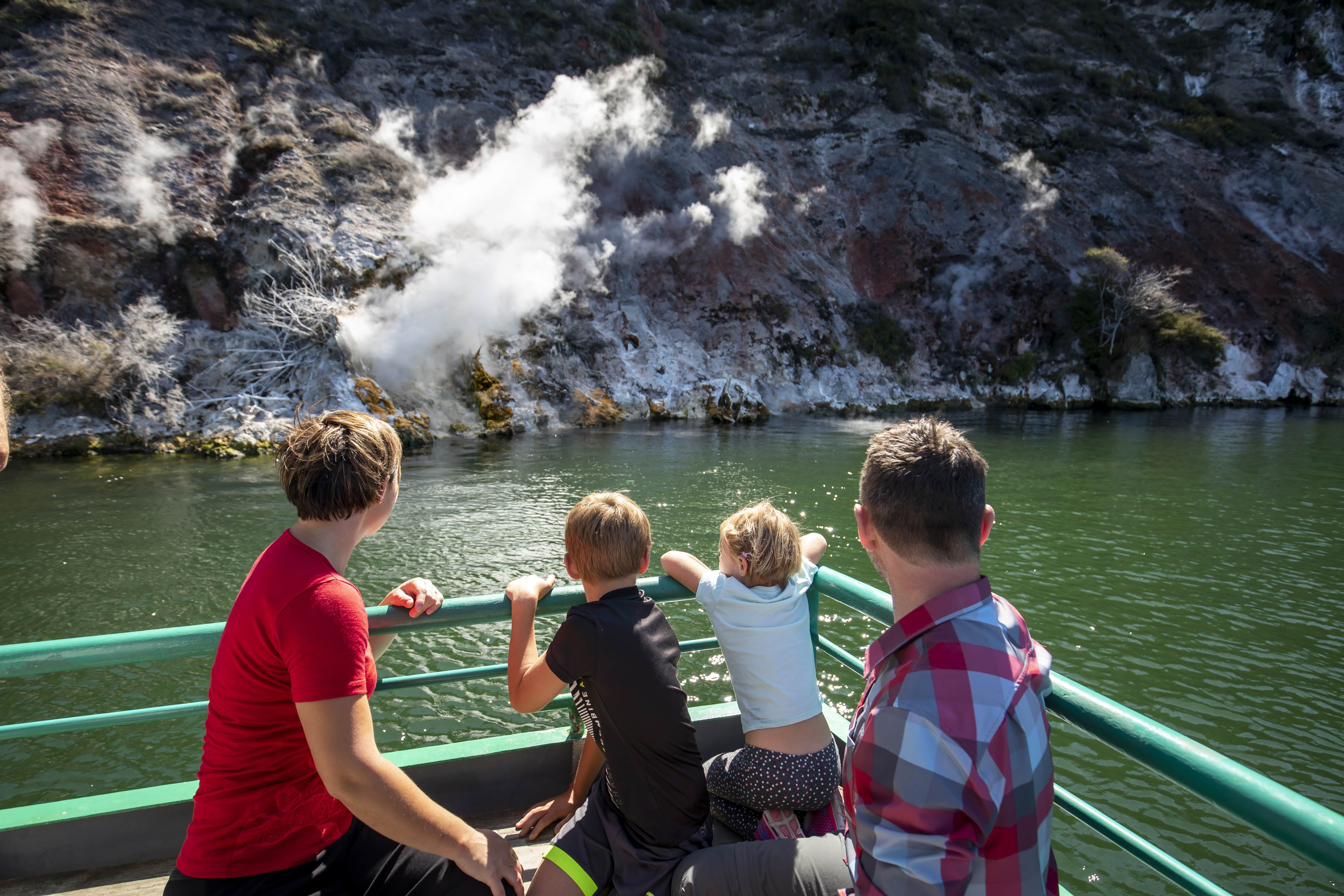
Walking Trails
Waimangu has a 4km walking trail from the visitor centre at the top of the valley, to Lake Rotomahana at the bottom. There are a number of options along the way including an optional hiking trail over the top of Mt. Hazard and a wetland walk. There are 3 bus stops throughout the valley so you can walk as little or as much as you like, and take the bus back uphill from the bottom or between sections.
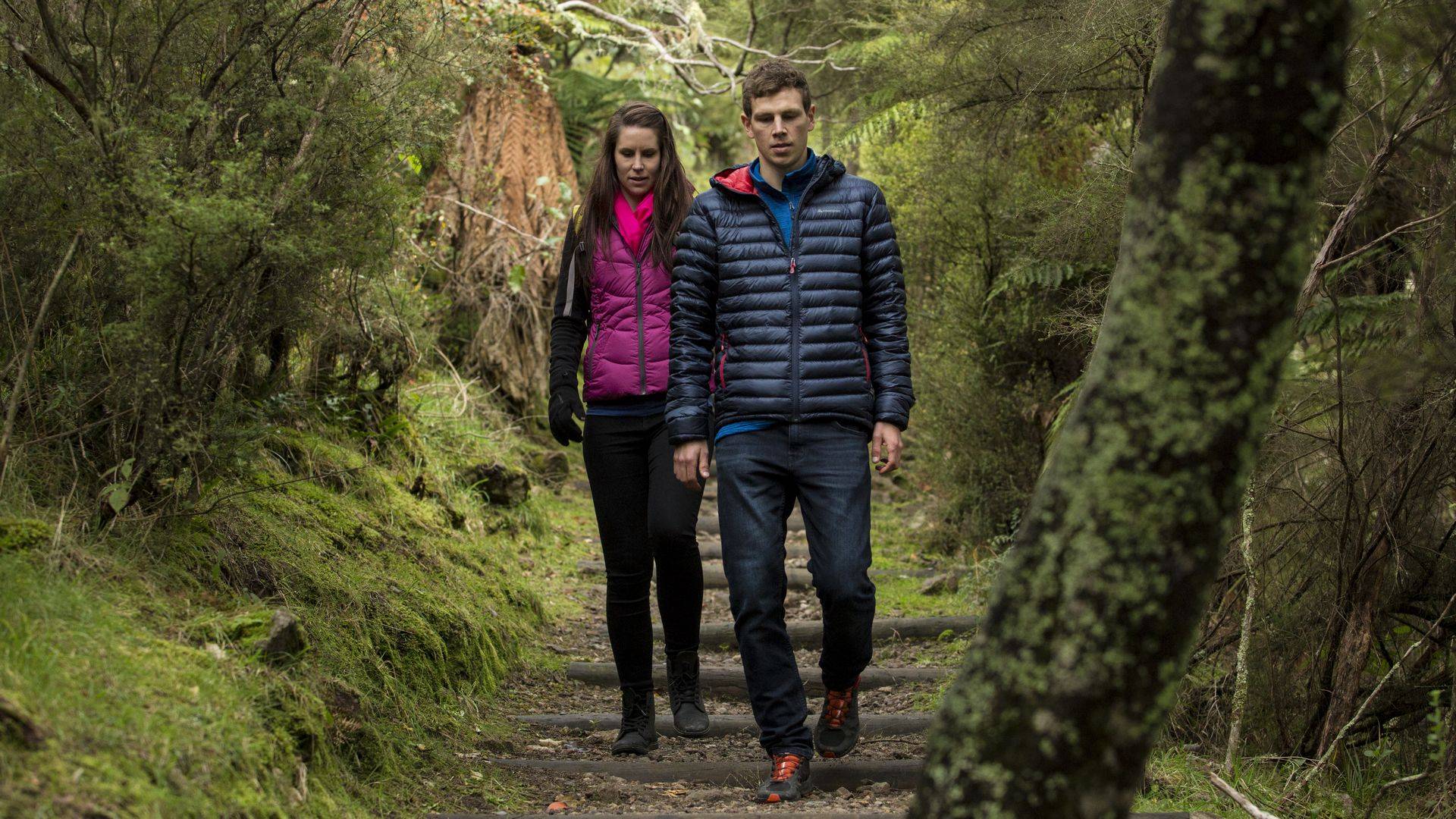
Wai-o-Tapu has 3 coloured loop walks. The most spectacular and colourful pools are on the shortest and closest boardwalk loop. The second and third walks extend from this main track and all 3 walks can be completed back to the visitor centre in about 1.5 hours.
Lakes
The furthest loop track at Wai-o-Tapu ends up at Lake Ngakoro, with water ranging from a dark olive to a bright iridescent green. From here, on a clear day you can see over to Mount Tauhara and towards the mountains of the Tongaririo National Park.
The walking trails at Waimangu Volcanic Valley take you down to Lake Rotomahana, with Mt Tarawera towering behind. You can take a boat cruise out on the lake and discover the story of the Pink and White Terraces, once considered to be the 8th wonder of the world, but now buried under the lake by the Tarawera eruption in 1886. There are geothermal attractions on the lakeside that can only be viewed from the boat including a geyser and the steaming cliffs.
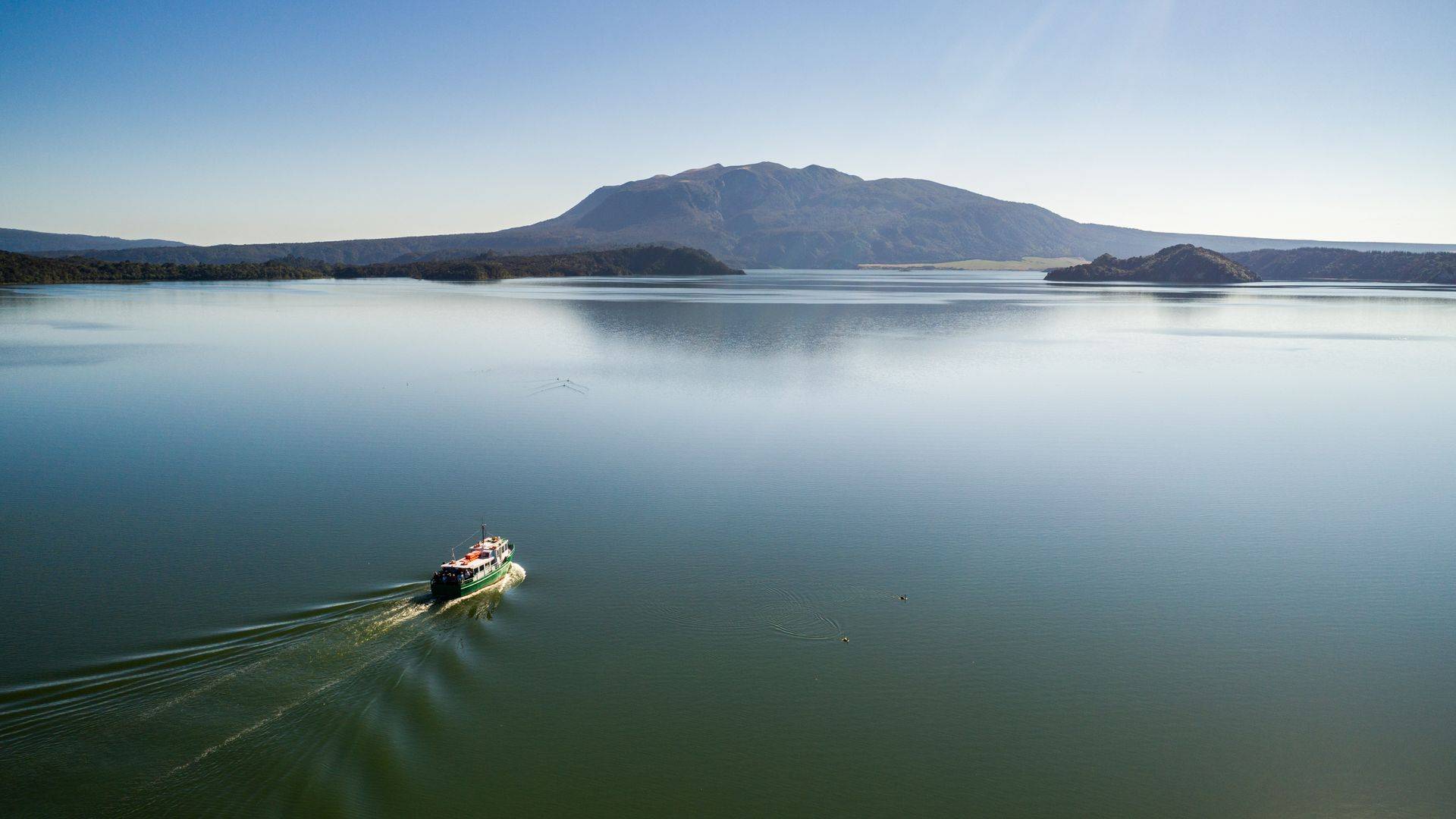
The Experience
Waimangu Volcanic Valley is a bit more off the beaten track. The trails weave down the valley and through regenerating native bush. The visitors are spread out and it feels quiet, even when the car park looks busy. It’s best to take your time to enjoy the nature in the valley and explore at your own pace and discover some of the additional trails.
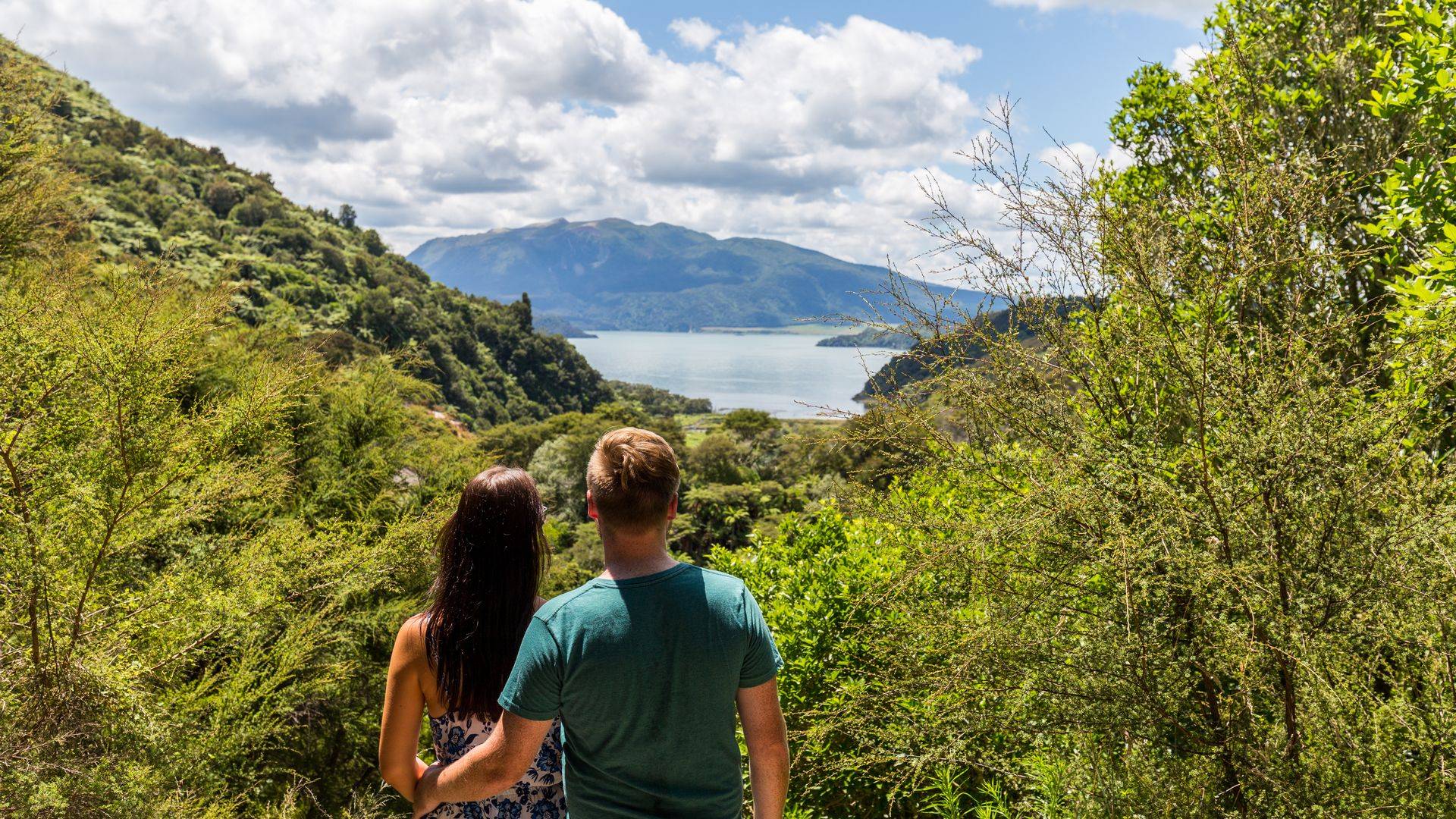
Wai-o-Tapu is more concentrated and tends to get busier, particularly if you visit around the time of the geyser eruption in the morning. The most spectacular geothermal attractions can be found on the closest loop, so good for those short on time. Those wanting to explore further can take the extended trails to Ngakoro.
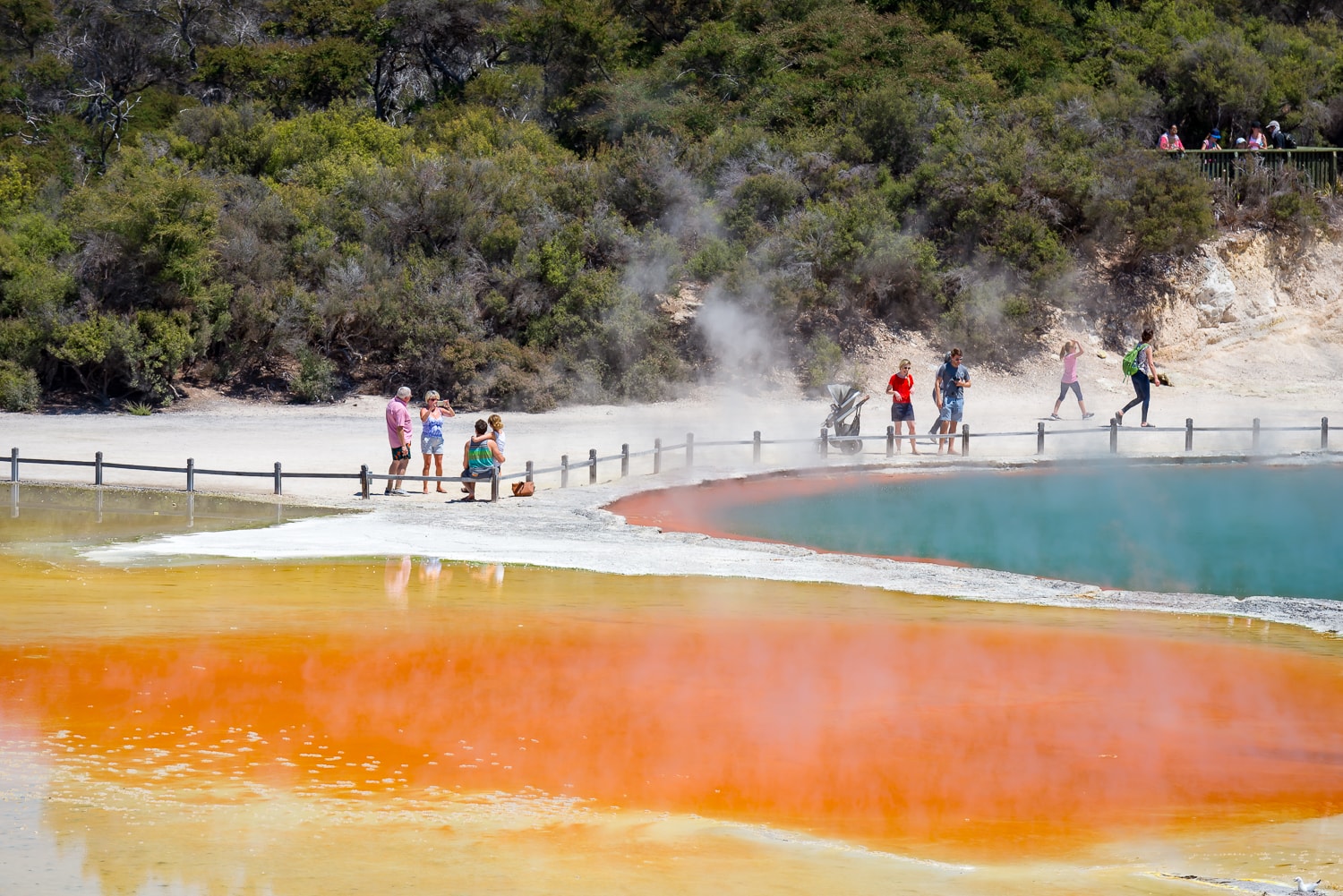
The Verdict
The two geothermal attractions are quite different, so many people choose to visit both, and many guided tours will show you the best bits of both Wai-o-Tapu and Waimangu Volcanic Valley. If you have to pick only one, then think about what’s important to you and go for it, you won’t be disappointed, you’ll have an incredible experience whichever you choose!

